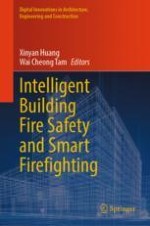2024 | OriginalPaper | Buchkapitel
Fire Safety Design of Confined Building Environment with Mechanical Ventilation
verfasst von : Xiao Chen
Erschienen in: Intelligent Building Fire Safety and Smart Firefighting
Verlag: Springer Nature Switzerland
Aktivieren Sie unsere intelligente Suche, um passende Fachinhalte oder Patente zu finden.
Wählen Sie Textabschnitte aus um mit Künstlicher Intelligenz passenden Patente zu finden. powered by
Markieren Sie Textabschnitte, um KI-gestützt weitere passende Inhalte zu finden. powered by
